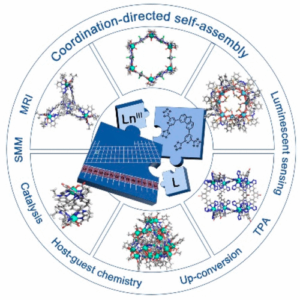Contents
ToggleContents
- 1 The Significance of Coordination Structures
- 2 Streamlining Efforts And Avoiding Duplication
- 3 Fostering Collaboration and Knowledge Sharing in Coordination Structures
- 4 Optimizing Resource Distribution in Coordination Structures
- 5 Monitoring And Evaluation
- 6 Adaptability And Resilience
- 7 Challenges And Considerations
- 8 Sustainability And Long-Term Impact
- 9 Examples Of Successful Coordination Structures
- 10 The Role Of Technology In Coordination
- 11 Looking Ahead
- 12 Empowering Local Communities
- 13 Cultivating A Culture Of Collaboration
- 14 Education And Training
- 15 Ethical Considerations
- 16 The Role Of Leadership
- 17 Conclusion
In the contemporary and dynamically changing landscape, communities stand as pivotal entities that actively engage with challenges and possibilities. The vitality of a community lies in its ability to organize and harness its capabilities effectively. The linchpin for achieving this lies in coordination structures, which comprise diverse strategies, frameworks, and mechanisms. These structures serve as the underlying framework to facilitate efficient efforts, promote collaboration, and gauge the collective potential of a community.

By implementing such coordination structures, communities gain the capacity to optimize their influence, pooling resources toward shared goals and realizing collective objectives. This approach not only enhances the efficacy of community initiatives but also cultivates an environment conducive to sustained growth and positive transformation.
The Significance of Coordination Structures
Coordination structures play a pivotal role in instilling order and coherence within a community by providing frameworks that facilitate effective communication, collaboration, and resource allocation among various stakeholders. These structures act as guiding mechanisms, ensuring that each member of the community is informed about their role and contributions to the overall goals. Through well-defined coordination structures, communities can streamline their efforts, enhance collaboration, and allocate resources efficiently to achieve collective objectives.
Streamlining Efforts And Avoiding Duplication
Coordination structures in a community are valuable because they help avoid doing the same work twice. Sometimes, different people or groups in a community might have similar goals or tasks. If everyone works independently without coordinating, it can result in unnecessary work, wasted resources, and confusion. Coordination structures step in to recognize these overlaps and create a way for everyone to work together more efficiently. This ensures that the community uses its resources wisely and achieves its goals effectively.
Fostering Collaboration and Knowledge Sharing in Coordination Structures
Coordination structures promote collaboration by providing opportunities for community members to communicate and share ideas. This regular interaction ensures the exchange of expertise, resulting in a more diverse pool of knowledge and skills. Not only does this enhance the community’s capabilities, but it also fosters an environment of ongoing learning and improvement.
Optimizing Resource Distribution in Coordination Structures
Effectively measuring and distributing resources is essential for the successful functioning of a community. Coordination structures play a crucial role in this process by establishing organized frameworks. These structures ensure that resources, be it time, finances, or manpower, are allocated wisely and fairly according to the community’s priorities and needs.
The coordination structures create transparent channels for requesting and providing resources within the community. This clarity prevents imbalances and ensures that resources are utilized optimally. Through these structures, community members can communicate their requirements, and those with the means to contribute can efficiently provide support.
Read Also:- The Benefits of Utilizing Parallel Coordinate Plots in Business
Monitoring And Evaluation
Coordination structures play a vital role in assessing the progress and capabilities of a community. By incorporating well-defined metrics and evaluation processes, these structures provide stakeholders with the means to measure the effectiveness of their collective efforts. This data-driven approach empowers community members to make informed decisions and adapt strategies based on the insights gained from assessments.
The ability to measure progress is crucial for communities to stay on track towards their objectives. Coordination structures facilitate the systematic collection and analysis of relevant data, allowing stakeholders to identify areas of success and areas that may require adjustments. This continuous feedback loop ensures that the community remains dynamic and responsive to changing circumstances.
Adaptability And Resilience
Communities, as dynamic entities, undergo continuous evolution in response to various influences, both internal and external. Coordination structures play a pivotal role in facilitating this adaptive process, ensuring that communities can effectively respond to changing circumstances and maintain resilience. These structures provide essential mechanisms for accommodating new members, adjusting priorities, and addressing emerging challenges.
One key aspect of adaptability is the incorporation of new members into the community. Coordination structures establish processes and frameworks to seamlessly integrate individuals, ensuring a smooth transition and fostering a sense of belonging. This inclusivity contributes to the community’s diversity and the enrichment of its collective capabilities.
Challenges And Considerations
The implementation of coordination structures is a task fraught with challenges, as various factors can impede their successful establishment. Issues such as miscommunication, power dynamics, and resistance to change can hinder the seamless integration and functioning of these systems within a community. Overcoming these hurdles necessitates a strategic approach, underpinned by effective leadership, transparent communication, and an unwavering commitment to inclusivity.
One prominent challenge often encountered is the potential for miscommunication within coordination structures. Establishing clear channels of communication, defining roles and responsibilities, and promoting open dialogue are crucial steps in mitigating this issue. Effective leadership plays a pivotal role in fostering a communication-friendly environment, where all stakeholders feel empowered to express their thoughts and concerns.
Sustainability And Long-Term Impact
The impact of coordination structures transcends immediate objectives, leaving a lasting imprint on a community’s long-term sustainability. A well-implemented coordination framework serves as a bedrock for the enduring success of community efforts. One of its pivotal contributions lies in fostering a sense of continuity and institutional memory, preserving essential knowledge, effective strategies, and valuable relationships. Even as individual members transition in and out of the community, this continuity safeguards the accumulation of collective wisdom, ensuring that the community’s capabilities not only endure but also progress and refine over time.
The preservation of institutional memory through coordination structures is instrumental in maintaining the community’s identity and purpose. Knowledge gained from past experiences, successful initiatives, and lessons learned becomes an invaluable asset. This reservoir of insights serves as a guide for future endeavors, preventing the reinvention of the wheel and enabling more informed decision-making.
Examples Of Successful Coordination Structures
Numerous real-world examples from diverse areas underscore the impactful role of coordination structures in enhancing community capabilities. Consider the response to natural disasters, where relief organizations, government agencies, and community groups join forces through well-established coordination structures. These structures facilitate efficient collaboration, enabling quick decision-making, resource allocation, and communication. As a result, lives are saved, and the impact of disasters is minimized.
In the realm of open-source software development, another compelling example emerges. Communities of programmers and enthusiasts collaborate on projects using coordination structures that encompass version control systems, issue tracking platforms, and regular communication channels. These structures play a crucial role in ensuring that contributions are well-organized, addressing bugs promptly, and guiding the software’s coherent evolution.
The Role Of Technology In Coordination
In the contemporary digital landscape, technology stands as a cornerstone in empowering coordination structures. The advent of online platforms, communication tools, and project management software has ushered in a revolution in the way communities organize and assess their capabilities. These technological tools not only enable real-time communication but also facilitate seamless data sharing and collaboration, regardless of geographical constraints. As a result, even more diverse communities can effectively work together, breaking down barriers and enhancing their collective impact.
The integration of technology into coordination structures opens up new avenues for efficiency and innovation. It empowers communities to navigate challenges with agility, respond swiftly to emerging needs, and adapt to evolving circumstances. Ultimately, the harmonious blend of technology and coordination structures propels communities towards greater resilience, inclusivity, and effectiveness in achieving their shared objectives.
Looking Ahead
As our world undergoes continuous transformation, the significance of coordination structures in community development is poised to grow even more pronounced. Contemporary global challenges spanning climate change, public health, social justice, and technological advancements necessitate coordinated endeavors on an unprecedented scale. Communities fortified with robust coordination structures are poised to navigate these challenges adeptly and capitalize on emerging opportunities.
In summary, the establishment of coordination structures within communities emerges as a foundational mechanism for organizing and assessing capabilities. These structures not only streamline collective efforts but also nurture collaboration, ensure effective resource allocation, monitor progress, and facilitate adaptation to dynamic circumstances. While the implementation of coordination structures may encounter challenges, the substantial advantages outweigh these difficulties, paving the way for more resilient, impactful, and cohesive communities. By acknowledging the pivotal role played by coordination structures, communities can unlock their collective potential, fostering substantial outcomes and leaving a lasting positive imprint on the world.
Empowering Local Communities
Coordination structures extend beyond large-scale organizations and global initiatives; they play a crucial role in empowering local communities as well. Entities such as neighborhood associations, community gardens, and volunteer groups greatly benefit from thoughtfully designed coordination structures. These structures facilitate the organization of volunteer schedules, efficient resource management, and alignment of individual contributions with the overarching objectives of the community.
In the realm of urban planning, coordination structures contribute to the creation of vibrant and sustainable cities. By bringing together urban planners, architects, policymakers, and residents, these structures foster collaborative efforts to design spaces that cater to the diverse needs of the population. This approach ensures that cities are not only functional but also culturally rich and environmentally conscious.
Cultivating A Culture Of Collaboration
Successful coordination structures go hand in hand with cultivating a culture of collaboration within a community. It involves ensuring that community members grasp the significance of collaborative efforts and recognize the positive impact they can bring. This culture of collaboration is not confined to the confines of particular projects; rather, it becomes an intrinsic aspect of how the community functions. It nurtures a spirit of collective responsibility and shared success, creating an environment where individuals actively participate and contribute to the overall well-being of the community.
Education And Training
Unlocking the full potential of coordination structures necessitates a focus on education and training within the community. It is imperative that community members comprehend the purpose and intricacies of these structures to actively engage in the collaborative process. Organizing workshops, seminars, and providing educational resources that elucidate the significance of coordination and offer practical guidance can significantly bolster a community’s ability to effectively employ these structures. Such educational initiatives empower individuals with the knowledge and skills needed to contribute meaningfully to coordinated efforts, fostering a more engaged and capable community.
Ethical Considerations
In the quest for effective coordination, ethical considerations take center stage. Emphasizing power dynamics, representation, and inclusivity becomes paramount in the design and implementation of coordination structures. The forefront of these structures should prioritize hearing all voices within the community, with decision-making processes characterized by transparency and active participation. This approach ensures the equitable distribution of coordination benefits and celebrates the diversity of the community rather than suppressing it. By anchoring coordination structures in ethical principles, communities can foster a sense of fairness, respect, and unity, laying the groundwork for sustainable and inclusive collaboration.
The Role Of Leadership
Leadership assumes a pivotal role in steering the success of coordination structures. Effective leaders possess a nuanced understanding of collaboration, communication, and consensus-building. They inspire a shared vision, foster a culture of trust, and guarantee that the advantages of coordination are palpable and transparent to all community members. Robust leadership not only encourages active participation but also addres
ses conflicts and sustains the momentum of coordinated endeavors. In essence, leaders become the driving force behind the seamless functioning and positive impact of coordination structures within the community. Their ability to navigate complexities, articulate a compelling vision, and cultivate a spirit of collective responsibility significantly contributes to the overall success and sustainability of coordination efforts.
Conclusion
Coordination structures serve as indispensable frameworks for organizing and measuring the capabilities of an entire community. These structures streamline efforts, foster collaboration, allocate resources effectively, monitor progress, and adapt to changing circumstances. Despite challenges in implementation, the benefits far outweigh the difficulties, leading to stronger, more resilient, and impactful communities. By recognizing the vital role that coordination structures play, communities can harness their collective potential to achieve greater outcomes and make a lasting difference in the world.
Coordination structures are not limited to large-scale organizations but also empower local communities, urban planning initiatives, and various grassroots efforts. The cultivation of a culture of collaboration, education, ethical considerations, and effective leadership are crucial elements in fully realizing the benefits of coordination structures. As communities face evolving challenges, the importance of coordination structures will only increase, positioning them as essential tools for navigating complex issues and seizing new opportunities on both local and global scales.


